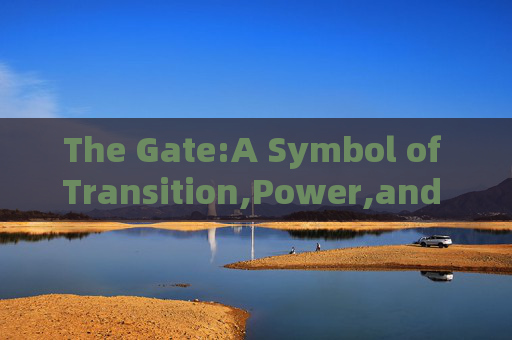本文目录导读:
- Introduction
- The Historical Significance of Gates
- The Symbolism of Gates in Literature and Philosophy
- Modern Gates: Security, Technology, and Architecture
- Conclusion: The Eternal Threshold
Introduction
Gates have been a fundamental part of human civilization for millennia. They serve as physical barriers, symbolic thresholds, and architectural statements. From the grand gates of ancient cities to the humble garden gate in a countryside home, these structures hold deep cultural, psychological, and even spiritual significance. This article explores the multifaceted role of gates throughout history, their symbolism in literature and religion, and their modern-day applications in security, architecture, and technology.
The Historical Significance of Gates
Ancient City Gates: Fortresses of Power
In ancient times, gates were more than mere entrances—they were fortifications that determined the fate of cities. The Ishtar Gate of Babylon, adorned with glazed blue bricks and depictions of dragons and bulls, was not just an entrance but a statement of Nebuchadnezzar II’s power. Similarly, the Gates of Troy in Homer’s Iliad symbolize both protection and vulnerability, as the Trojan Horse’s entry led to the city’s downfall.
Medieval Castle Gates: Defense and Dominance
During the Middle Ages, castle gates were engineered for war. Portcullises, drawbridges, and murder holes made them nearly impregnable. The Tower of London’s Traitor’s Gate, for instance, was where prisoners entered before execution, reinforcing the gate’s dual role as protector and enforcer of royal authority.
Sacred Gates in Religion and Myth
Many religions depict gates as thresholds between the mortal and divine realms:
- The Pearly Gates in Christianity symbolize the entrance to Heaven.
- In Hinduism, temple gates (gopurams) are elaborately carved, representing the transition from the mundane to the sacred.
- The Gate of Hell in Dante’s Inferno bears the infamous inscription: "Abandon all hope, ye who enter here."
The Symbolism of Gates in Literature and Philosophy
Gates as Metaphors for Opportunity
The phrase "When one door closes, another opens" reflects the gate’s role as a symbol of change. In The Great Gatsby, the green light at the end of Daisy’s dock acts as a metaphorical gate to Gatsby’s dreams—always visible but never fully attainable.
Psychological Gates: The Mind’s Barriers
Carl Jung discussed the concept of psychological gates—thresholds between consciousness and the unconscious. Dreams often feature gates, representing decisions, fears, or revelations.
The "Gates of Perception"
Inspired by William Blake’s quote ("If the doors of perception were cleansed, every thing would appear to man as it is, infinite."), Aldous Huxley wrote The Doors of Perception, exploring altered states of consciousness. This idea influenced counterculture movements, including The Doors’ band name.
Modern Gates: Security, Technology, and Architecture
Smart Gates and Digital Security
Today, gates are no longer just physical. Cybersecurity employs firewalls (digital gates) to block unauthorized access. Biometric gates at airports use facial recognition, blending ancient gatekeeping with AI.
Architectural Marvels: From Private Estates to Public Spaces
- The Brandenburg Gate in Berlin stands as a monument to unity after the Cold War.
- The Gates of Central Park (2005) by Christo and Jeanne-Claude transformed New York with saffron-colored fabric arches, redefining urban art.
The Future of Gates: AI and Automation
Self-opening gates, drone-monitored borders, and blockchain-secured digital gates are shaping the future. Will the next evolution of gates be virtual, or will physical barriers remain essential?
Conclusion: The Eternal Threshold
Gates are more than barriers—they are symbols of transition, power, and mystery. Whether guarding a city, marking a spiritual passage, or securing data, they remind us that every entrance is also an exit, every barrier a potential opening. As technology evolves, so too will the concept of the gate, but its symbolic weight will endure.

From the Golden Gate Bridge connecting lands to the Stargate of sci-fi lore transporting us to other worlds, gates will always fascinate humanity—because beyond every gate lies the unknown, and the unknown is where adventure begins.
Word Count: ~1,050
This article explores the gate’s historical, symbolic, and technological dimensions, ensuring a comprehensive look at its significance across cultures and eras. Would you like any refinements or additional sections?




